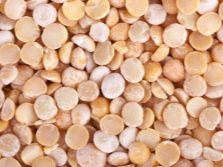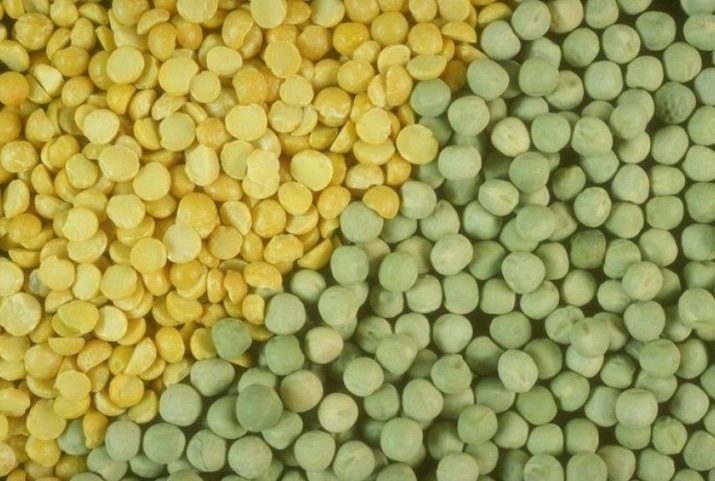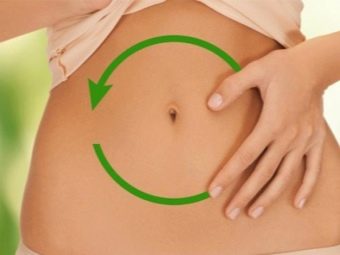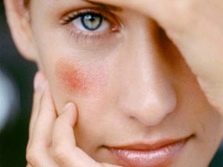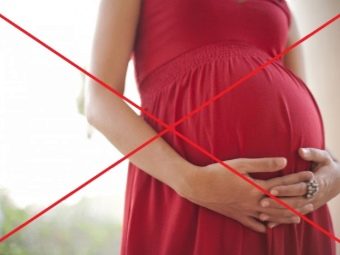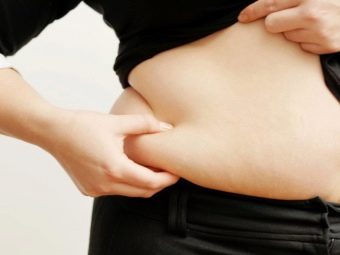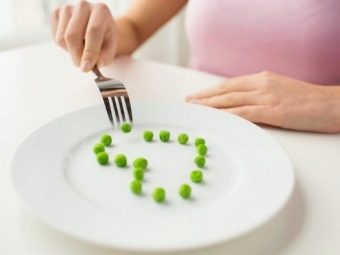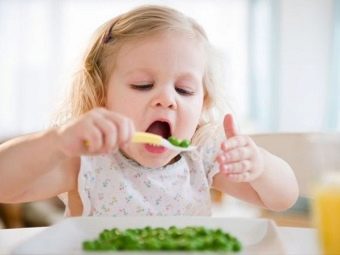Pea: the benefits and harm, applications
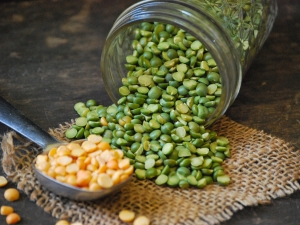
Pea is a legume crop.It is easy to grow, it is characterized by good yield and in most cases is characterized by unpretentious culinary processing. Due to its rich chemical composition, culture is quite popular in cooking, traditional medicine, and cosmetology. However, before adopting the medicinal properties of the product, it is necessary to study its features and contraindications for use.
Special features
The progenitor of modern culture is the field pea growing on the meadows of the European territory of Eurasia. The first country where it was cultivated was Ancient India. The annual plant was liked by the inhabitants of this country for its unpretentiousness. Today it is not grown only in Antarctica.
Pea differs in the shape of the fruit and is characterized by the presence of a waxy coating on the entire surface of the plant, which serves as its peculiar defense. It may have a different shade of green (from yellowish to bright green). It is distinguished by flowability, self-sorting, as well as wellness. At the same time, it is precisely the resistivity that allows the plant to take root in different conditions. But its low level is the cause of premature grain damage.
Today, the best varieties of peas, the grains of which can be bought in stores, are the following varieties:
- sweet;
- cerebral;
- shelling
The first type is familiar to all as "sugar". This variety is suitable for salads, and it is conserved in tin or glass jars. Groats from it do not produce due to the low moisture content. In other words, if they made cereal from peas, it would spoil too quickly. The brain variant of peas is so named because it has characteristic grooves similar to the human brain.
It provides cooking and canning, it has excellent taste. However, it cannot completely soften into a pasty gruel. Shelling type of culture in demand among gardeners. It is a more common material for planting and growing, because it is universal. From it you can not only cook mashed potatoes, but also grind into flour. Whole grain peas are good because they are suitable for home preservation and long-term storage.
The legume itself belongs to the category of cold-resistant, as it is able to withstand a slight and short decrease of subzero temperature. This feature allows you to grow peas in different climatic regions of our country, including not only ornamental, but also food varieties of plants. In this case, the harvest for eating may have different degrees of maturity. It depends on the variety variety.
For example, in some cases the juiciness of the pods is important (when eating fresh peas in the raw state). For cooking, the culture is harvested at a stage when the peas are already quite solid. For use, they use not only the peas themselves, but also pea flour. If necessary, you can do it yourself at home.
Calorie content
Culture is characterized by a high content of proteins and carbohydrates. For this reason, it can be compared with the energy value of rabbit meat or lean beef tenderloin. At the same time, peas are easier to store and do not need a freezer. It covers human needs for vegetable protein, vitamins, carbohydrates, micro and macro elements.
An interesting nuance is the fact that the energy value of a culture differs depending on its type. It is easily absorbed by the body and has a unique complex of amino acids. Thanks to tryptophan, lysine and methionine, the percentage concentration of protein in peas exceeds various vegetable crops. In addition to the variety, the caloric content depends on the characteristics of the storage of the product and its primary processing.
Dietary fiber in it is about 10%. In addition, it contains vitamin A (retinol), which contributes to the accelerated regeneration of body tissues.Other components include provitamin A, ascorbic acid and B vitamins. The concentration of proteins, fats and carbohydrates is different, while the fats usually do not exceed two percent, proteins and carbohydrates vary depending on the diversity of the vegetable and its type.
The percentage of water can vary from 10 to 14, depending on the storage conditions of the product. With regards to calorie content, it is worth noting that it is different even in cooked in different ways from peas. More clearly this is presented in the table, where you can pay attention not only to the indicator of kilocalories per 100 grams. The data allow us to notice a difference in the composition of the amount of protein, fat and carbohydrates.
Energy data peas of different types and method of preparation
kind of peas | calories | squirrels, g | fats, g | carbohydrates, g |
canned green | 40 | 3,1 | 0,2 | 6,5 |
peeled | 299 | 23 | 1,6 | 48,1 |
corn | 298 | 20,5 | 2 | 49,5 |
fresh green | 55 | 5 | 0,2 | 8,3 |
raw sugar | 42 | 2,8 | 0,2 | 7,55 |
frozen sugar | 42 | 2,8 | 0,3 | 4,1 |
boiled sweet with salt, frozen | 50 | 3,5 | 0,38 | 5,33 |
frozen sweet boiled | 52 | 3,5 | 0,38 | 5,92 |
brewed sugar grade with salt | 40 | 3,27 | 0,23 | 3,66 |
boiled sweet without salt | 42 | 3,27 | 0,23 | 4,25 |
square with raw stems | 148 | 11,6 | 0,9 | 28,1 |
square green, raw | 49 | 6,95 | 0,87 | 4,31 |
square salty, boiled | 37 | 5,31 | 0,66 | 3,21 |
square salt, cooked | 38 | 5,31 | 0,66 | 3,21 |
juicy raw | 81 | 5,42 | 0,4 | 9,35 |
canned green seasoned | 50 | 3,09 | 0,27 | 7,25 |
plain green in cans | 58 | 3,01 | 0,48 | 10,6 |
canned without salt | 53 | 3,19 | 0,3 | 9,75 |
green frozen | 77 | 5,22 | 0,4 | 9,12 |
ripe salted peas grains, cooked | 98 | 7,05 | 0,51 | 17,08 |
sprouted grains of ripe peas without cooking | 124 | 8,8 | 0,68 | 27,11 |
pigeon crude | 136 | 7,2 | 1,64 | 18,78 |
dried green | 295,5 | 35 | 0,4 | 40,5 |
sweet peppers | 42 | 2,8 | 0,2 | 7,55 |
plain dried peas | 298 | 20,5 | 2 | 49,5 |
On average, a large number of kilocalories accounts for legumes in fresh, dry and ground form. A lower energy value is observed in the culture, the fruits of which have only just begun to ripen. Slightly more calories in canned vegetables. The increase in nutritional value of the culture is explained by the process of formation and accumulation of sugary substances. In addition to the pea variety, calorie content depends on the thickness of the cooked dish.
Composition
The chemical composition of peas consists of a wide range of useful components, including rare minerals. It contains thiamine, which is necessary for energy metabolism, as well as stimulating the formation of amino acids and plastic structures. It is necessary for the metabolism of branched amino acids. In addition, the peas contains vitamins A and PP, beta-carotene, riboflavin and choline.
The latter component is necessary for the synthesis and phospholipid metabolism of the liver. The chemical composition of peas includes other B vitamins (for example, pantothenic acid, pyridoxine, folates, alpha-tocopherol), biotin and niacin. Among other components in the culture there is potassium, due to the content of which the adjustment of the water-lipid and acid-base balance is carried out. Other macronutrients that are in peas are:
- calcium;
- silicon;
- magnesium;
- sodium;
- sulfur;
- phosphorus;
- chlorine.
Thanks to the phosphorus, which is part of the chemical composition of peas, the body's acid-base balance is normalized. It is also necessary for bone tissue. In addition to macronutrients, there are 18 different microelements in peas. Among them, aluminum, boron, vanadium, cobalt, copper, molybdenum, nickel, tin, selenium are characterized by the greatest impact on the properties of the culture.
An important role in the properties have a titanium, chromium and zirconium. Yoda, iron and manganese are few in peas. Aluminum has a beneficial effect on the condition of the skin. This trace element is necessary for the structure of bone tissue. With regards to nutritional value per 100 grams of culture, it is worth noting that most of it comes from starch and dextrins (more than 44%). The concentration of fructose usually does not exceed 1.3 g, maltose - 0.72 g, and sucrose - no more than 0.8 g.
The chemical composition of peas changes as it ripens.
The more ripe it is, the less sugar there is in it, but more starch. The younger the grain, so they are softer and softer.
Beneficial features
The beneficial properties of peas to some extent depend on its variety. The opinion that it is all equally useful or harmful is erroneous. It is believed that the most useful plant is a fresh culture in the pods. Less useful can be called canned peas. You should not count on its benefit, since, in addition to its taste, it is incapable of more such peas.
Due to selenium, which is in the composition of fresh peas, it has an antioxidant effect, aimed at restoring the protective functions of the human body. It is relevant to replenish its energy costs, contributes to the removal of toxic substances and is a tool with anti-carcinogenic effects. Pyridoxine, which is present in peas, copes well with the breakdown of amino acids, the lack of which is associated with the appearance and development of seizures. The use of peas allows you to replenish the required protein concentration, as well as rid the body of heavy substances.
Regular intake of peas helps to compensate for the lack of vitamins and microelements. The product is good because it is a means of preventing cancer. Its use allows you to block access of blood to cancer cells, which does not allow them to grow. In addition, this feature significantly reduces the risk of tumors.
Peas are also useful for the work of the digestive organs, it nourishes the skin cells with nutrients, eliminates the existing parasites in the intestine. Other useful properties include the ability of peas to break down fat layers, stop the development of heart disease and blood vessels, reduce the severity of headaches, and slow down the aging of the body. Culture has a beneficial effect on the work of the endocrine system, because it is useful for the thyroid gland. In addition, it is impossible not to note its benefit for vision: eating peas for food is good for the eyes, relieves their fatigue, is a prevention of cataracts and a means of eliminating its symptoms.
This plant is really useful for the human body. However, this does not mean that it is a remedy for all diseases. In fact, its use has certain directions. It is necessary to take into account the fact that the ingestion of a raw product can lead to a breakdown of the digestive system, and therefore is not suitable for everyone. It is necessary to distinguish between the use of a simple product and a drug in the treatment of a specific disease or pathology.
If used correctly, it will help with urolithiasis. Frequent consumption of peas in food helps to strengthen the immune system and the whole body.
Who is shown?
No one would argue with the fact that peas are an excellent laxative that perfectly cleans the intestines and improves metabolism. Its use allows you to get rid of worms and is a measure of their prevention. It lowers cholesterol, and therefore is in high demand among buyers. Regular consumption of peas in food contributes to slowing the development of malignant tumors. In addition, it is considered an effective tool that can be used:
- diabetics;
- people suffering from diseases of the upper respiratory tract (including asthma);
- with dermatitis;
- for the treatment of skin diseases, including measles and eczema;
- those who suffer from malfunction of the liver;
- with tuberculosis;
- to strengthen the walls of blood vessels;
- with heartburn, prostatitis and atherosclerosis.
This is an excellent prophylactic agent that improves the flow of bile. It is useful for hypertensive patients and is a prevention of heart attack, allows you to maintain muscle tone.
It has a beneficial effect on human performance, so it is useful for those whose work is associated with hard physical labor. Along with the fact that it is an excellent means to reduce weight, peas can prolong the youth of the skin.Those who eat it constantly, mark the improvement of the nail plates, as well as the curls. In addition to getting rid of toxins, it promotes the excretion of salts and excess fluid from the body. This is especially true for the normal functioning of the kidneys.
The inclusion of peas in the diet has a beneficial effect on the work of the heart muscle. It is effective in vitiligo (diseases of the body associated with immune and nervous breakdown). In addition, the pea is considered to be an excellent effective means for losing weight. Green pods are rich in calcium and iron, and the capsid product is also good for the body.
An interesting nuance is the fact that the benefits of peas are not limited to internal use. Both grains and flour can be used externally (for example, for treatment or for cosmetic purposes). Such remedies, as a rule, perfectly heal even purulent wounds. They are also effective for erysipelas if applied to problem areas of the body.
Allergies to peas are rare, but its excessive use can adversely affect the kidneys. Usefulness for women is expressed in replenishing and increasing the level of hemoglobin in the blood, which is important during menstruation. With regards to men it can be noted that the use of peas contributes to a set of muscle mass. It is eaten by those who need to recover from prolonged training. In addition, pea is an effective prevention of diseases of the urinary system. Children can be given it initially in small quantities and cooked.
Contraindications
Despite the mass of beneficial properties of peas for health, there are situations when its use must be limited or eliminated altogether, since this may cause harm to the body. For example, it should not be used at all with increased blood clotting or thrombophlebitis, as well as cholecystitis. It is necessary to take into account the fact that the restrictions can be both exceptional and conditional. With regards to the first cases, it is worth noting that peas, whether fresh (raw), young peas in a pod, or boiled, sprouted or dried, are contraindicated in certain diseases of the human body.
For example, it can not be eaten with intestinal atony, as well as diseases of the gastrointestinal tract while reducing peristalsis. In the form of grain, it can infect the mucous membrane of the stomach and intestines. Peas have the ability to increase gas formation, which usually leads to bloating. This phenomenon is explained by the presence of coarse fibers, as well as saccharides.
In this case, if you do not want to give up eating peas at all, they eat it together with fennel or dill. This allows to some extent to neutralize the action of the legume.
It should be noted, and the possibility of grains to increase the concentration of uric acid, which is due to the purines. For this reason, you need to limit or completely eliminate peas from the diet (it can adversely affect the tendons and joints). It is unacceptable to eat peas for gout and jade, as the kidneys can not cope with the urates that appear when grains are digested. In addition, those who have insufficient blood supply to certain organs cannot eat peas either. In this case, the body will direct all forces to digestion, so the blood flow of other body systems will be broken.
Despite the fact that pregnant women are not recommended by doctors to eat peas, sometimes women think that it is excellent for constipation and does not harm the health of the mother and fetus. In fact, the use of a pregnant woman of this culture helps to improve the tone of the uterus. And this, in turn, increases the risk of miscarriage. Therefore, this product should not be consumed, especially for expectant mothers, whose pregnancy proceeds with complications.
It is also not recommended to eat the fruits of the plant to nursing mothers.Not only can pea cause mom's flatulence, but it will also contribute to changes in the quality of breast milk. Therefore, culture, in addition to an allergic reaction, can cause colic. In addition, it will change the composition of milk.
It should be noted that peas can harm the health of older people. This is due to the presence of diseases such as arthrosis, osteochondrosis, as well as reduced bowel tone. Purine, present in pea, can adversely affect the condition of the joints. And due to coarse fibers, the process of digestion can be accompanied by painful sensations.
Where is it used?
Due to the wide range of chemical composition of peas is used in various fields. In this case, both whole and crushed product and even sprouts can be used.
Cooking
Despite the fact that in the process of cooking peas lose their energy value, it retains useful properties. At the same time it can be enriched with various flavors, which will increase the number of calories. This fact is important not only for those who watch their weight, it is relevant for those who want to get rid of extra pounds. In cooking today they use not only dried product, but also raw and chilli.
In this case, the peas can be whole, split or crushed into flour. It is boiled, canned and frozen, which allows each customer to purchase the type of legumes that they like best. Peas make porridges, soups and salads. It is a component of national dishes (for example, hummus, dogas).
Its preparation as a whole has several features, for example:
- before cooking it is soaked for 5-7 hours;
- Salt during heat treatment is recommended at the very end of cooking (salt prevents the cooking);
- before cooking it must be rinsed under running water to reduce gas formation;
- boil peas need to simmer (this will allow to preserve its beneficial properties to the maximum).
This product is an excellent basis for any soup: vegetable, meat, mushroom, fish and lean. In this case, you can cook the soup not only from dry peas - depending on the recipe, you can use fresh green peas and even the option to freeze. In addition to potatoes, carrots, onions and sometimes tomatoes, a variety of spices and herbs can be included in the recipe, which is usually added to mashed potatoes.
Porridge is made from dry peas. Such dishes are especially tasty with various dressings and roasting. With regards to salads it is worth saying that dry peas are rarely used for their preparation: in this case, fresh, canned or thawed are more often used. Adding peas to salads makes dishes not only tasty, but also healthy and nutritious.
For dishes to which boiled peas are added, it is cooled after cooking. Some cooks cook peas from sausages, kissels, bread, pasta, pastries, toppings for pies and even pancakes. Others prefer to make pea cheese out of it, as well as pastes with various additives, passing it through a meat grinder after cooking. Gourmets cook some varieties of culture with dried apricots and sugar. Other recipes need smoked bacon, boiled rice.
ethnoscience
Bean culture is used as a remedy. For example, its correct use allows you to get rid of such body problems as small stones and sand in the kidneys, as well as the bladder. To do this, use the broth prepared from crushed stems, leaves, inflorescences and pods. In exchange application allows not only to remove toxins, but also to normalize the function of the bladder and kidneys.
Peas are used for medicinal purposes and to eliminate pain with toothache. In this case, make an infusion of legumes. Pea flour is also used as a remedy for heartburn. Sometimes for the same purpose they eat several fresh peas or dry grains, having previously soaked the second in water.
Pea flour is used to eliminate headaches and alleviate diabetes. For this purpose, it is taken before meals in the amount of half a teaspoon. When edema, crop sprouts are used as a diuretic, which is harvested during the flowering period. Together with the grains of them prepare a decoction, which is used by the course.
In folk medicine, peas are used as a means of combating boils, as well as eczema. To do this, use crushed peas (flour) and egg white. The components are mixed and applied to the affected areas of the body. Often used for these purposes and germinated type of culture. In this case, as a rule, before applying, the seedlings are blanched, which improves its absorption.
Germinated grain independently at home. To do this, use the usual plate and cheesecloth. Peas are thoroughly washed, put on a plate, covered with gauze and moistened with clean water. After that, put the plate in a dark place.
It is important that it is warm, which will allow the peas to sprout faster.
Cosmetology
Regarding the use of peas for cosmetic purposes, it all depends on the type of problem. For example, in addition to the grains, for this you can use the hood of them. Often at home, women resort to the use of pea flour to improve the condition of the skin. Using such tools, you can even out the tone of the face, get rid of age pigmentation, cleanse the skin and make it smoother, eliminating signs of wilting.
Recipes for face masks, neck can be varied, as well as the type of bean used. They are suitable for dry and normal skin types, and when added to the composition of egg white, they are suitable for types that are prone to greasiness. Cooked from peas or pea flour can be gruel, which will improve the condition of the hair.
For cosmetic purposes, use boiled, fresh and frozen peas.
Slimming
According to reviews, peas are the basis of a diet that helps to lose weight to those who have tried unsuccessfully to lose weight in other ways. Due to the chemical components of its composition, it accelerates metabolism, dulls the feeling of hunger and relieves the body of unnecessary waste. Together with the appropriate physical exercises, it allows not only to reduce weight, but also to tighten the body, saving it from flabbiness. However, this does not mean that the main load should be placed on the peas themselves.
You can not eat it without measure and expect that without physical activity, he will do all the work himself. It is necessary to make an effort, because laziness and the immense consumption of food can harm the body. Inactivity can lead to chronic constipation, even if a person eats peas.
You can not abuse the diet, because it can cause flatulence.
Peas are characterized by a balanced composition, it is well tolerated by the body and at the same time is available to every buyer. To choose the best product for this, you should look at it still in the store, paying attention not only to color, but also to size. As a rule, the best taste properties have small grains, the dimensions of which do not exceed 4 mm. All that is greater than this is related to fodder cultivars and does not have high palatability.
The color of a good product may be yellowish or green. In this case, the grain should not have stains. In addition, when looking at the package in more detail, it should not overlook the garbage, as well as small crushed particles. A quality product has no similar additives, as well as obvious damage to the package itself.
Recommendations
In the process of movement through the digestive tract, unpolished grains are undesirable because they can injure the mucous membrane, which is unacceptable if a person has erosive or ulcerative disease. Despite the fact that pea is a growth stimulant and maintains good muscle tone, children should be given it carefully. This is not a product that is eaten every day.
According to some reviews, the use of peas helps with hangover. It is able to relieve body fatigue, as well as normalize sleep. Some opinions indicate that peas are effective for measles and asthma, if used regularly. You need to boil it until it is completely melted. As a rule, it may take from 40 minutes to an hour or more. The difference in time depends on the type of pea.
When freezing peas, some of the useful qualities evaporate, so if you can, it is better to buy a fresh product. You can store ground peas, like lentils, for no more than 24 months in a dry place. It is desirable that direct sunlight does not fall on the jar of the product.
Capacity for storage can be used glass or plastic. It is important that it can be tightly closed with a lid. Before you put the product itself in it, you must make sure that it is dry. In order to avoid dampness, you can lay a small bag of edible salt on the bottom of the prepared container.
With regards to green fresh grains, it is worth considering that they can be stored for no more than two days under transportation conditions. It is important to monitor the temperature. As soon as the product is delivered into place, it must be frozen. Fresh grains are recommended to use immediately.
If during boiling water boils out faster than peas are boiled, then it is not cold water, but boiling water that should be added to the tank. This will preserve the taste of the product. If you plan to make mashed potatoes, do it right after the peas are cooked. Otherwise, it will not be possible to avoid lumps, and the porridge-like mass will not turn out homogeneous.
Pea flour can enhance the beneficial qualities of any baking. In addition, it can be used instead of whole grains when cooking soups, mashed potatoes, casseroles, puddings and cereals. Its use will eliminate the mass heterogeneity and facilitate the cooking process. To make it out of the grains themselves is not difficult if there is a regular coffee grinder in the house.
To find out which green pea is better to choose, see the next video.







